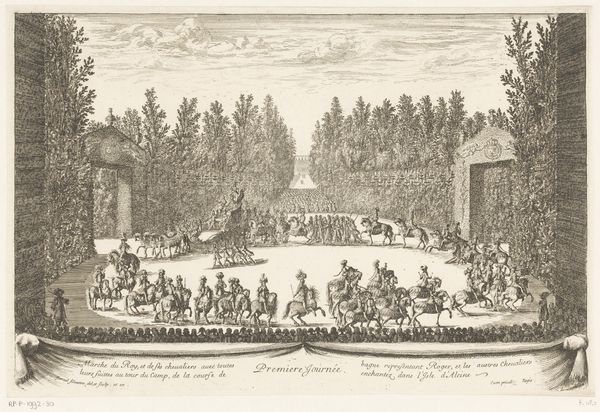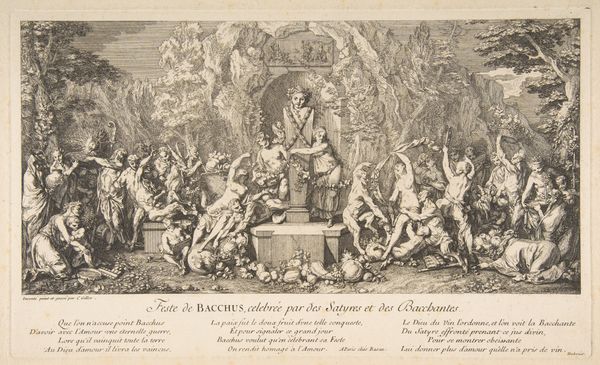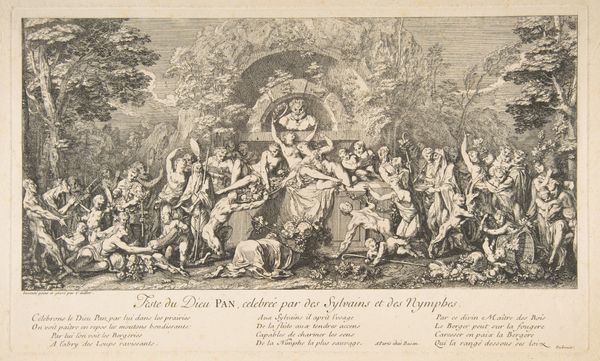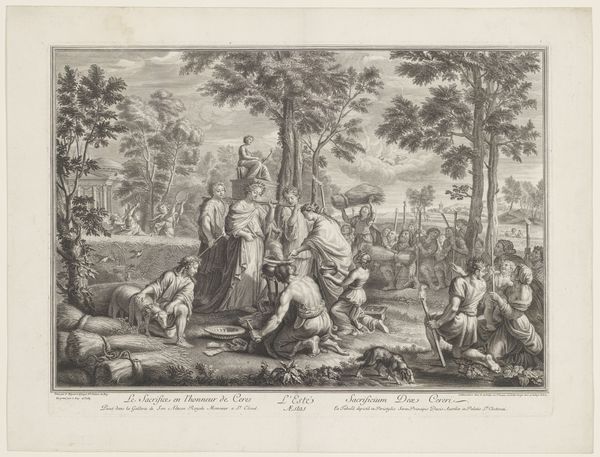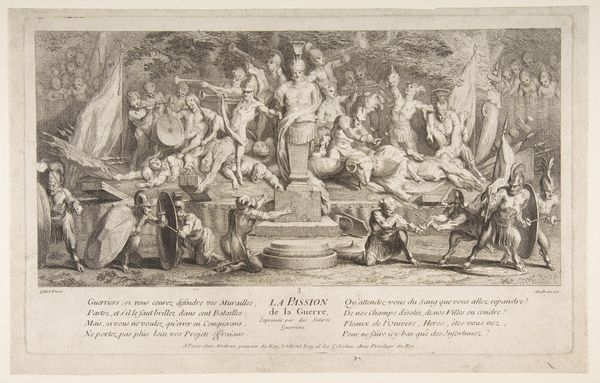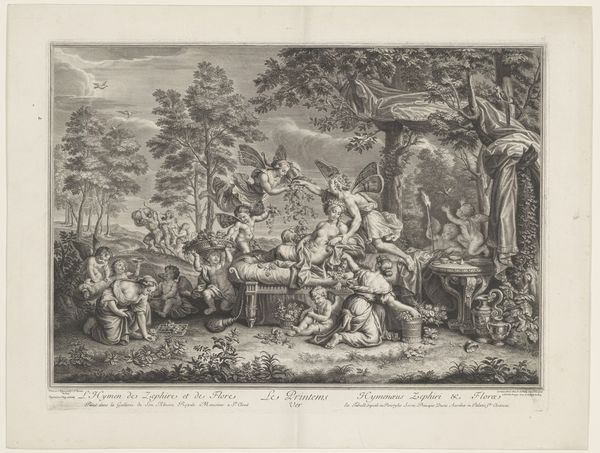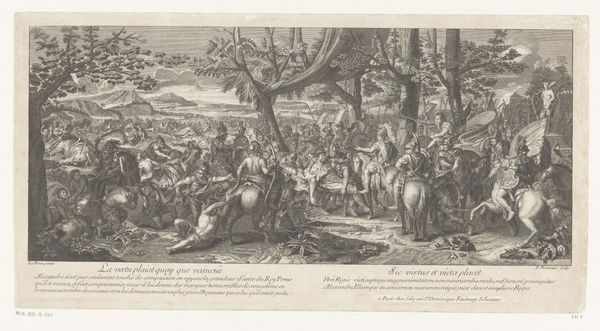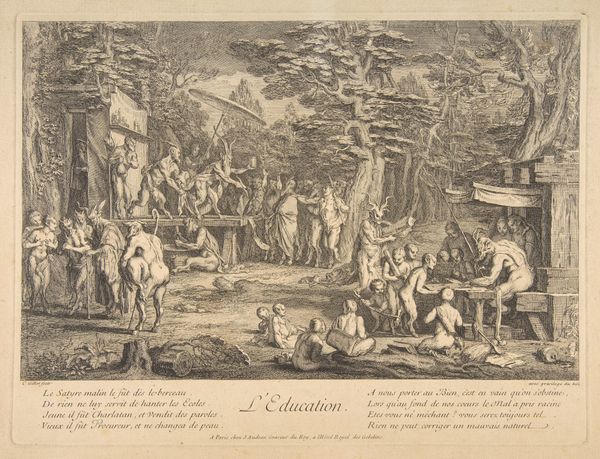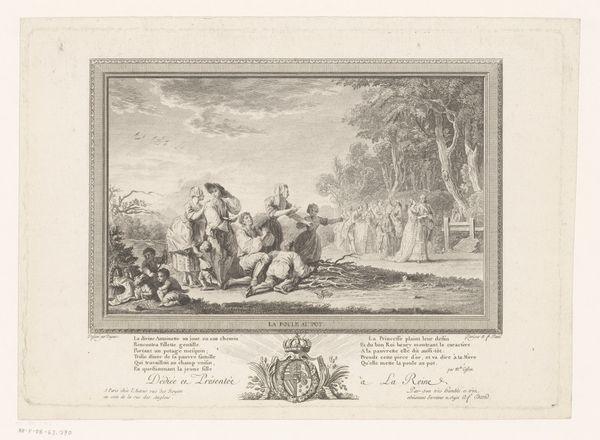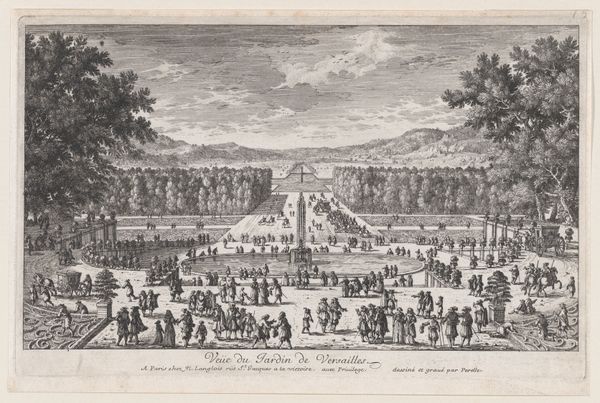
The Funeral (Les Obseques): various satyrs gathered in a clearing, funeral pyre to left, a freshly dug grave and a tomb decorated with satyr heads and antlers in center, upon which musicians are seated, from 'The lives of satyrs' (La vie des satyres) 1700 - 1720
0:00
0:00
drawing, print, engraving
#
drawing
#
narrative-art
#
baroque
# print
#
old engraving style
#
figuration
#
genre-painting
#
history-painting
#
engraving
Dimensions: sheet: 10 3/8 x 13 13/16 in. (26.4 x 35.1 cm) plate: 10 3/16 x 13 3/8 in. (25.8 x 34 cm)
Copyright: Public Domain
Here we see Claude Gillot's etching, "The Funeral," a scene teeming with satyrs rendered in ink on paper. Immediately, the Dionysian revelry is subverted by the somber occasion. The satyrs, typically emblems of unrestrained joy, are gathered for a funeral. Notice the tomb adorned with satyr heads and antlers, symbols of their wild nature, now ossified in stone. The motif of the skull, so prevalent in memento mori, is here replaced by the very visage of the satyr itself, a potent reminder of mortality's sting. Think of the ancient Roman funerary masks, imprints of the deceased's face worn to honor and remember them. Here, Gillot presents a grotesque echo, the satyr's own likeness serving as a constant, unnerving memorial. The satyrs' grief, however theatrical, hints at a deeper psychological truth – the struggle to reconcile our primal instincts with the inevitable end. The collective memory of loss, passed down through countless rituals, resurfaces here, filtered through the satyr's unique, untamed lens. The image, therefore, becomes a cyclical return to the theme of mortality.
Comments
No comments
Be the first to comment and join the conversation on the ultimate creative platform.
